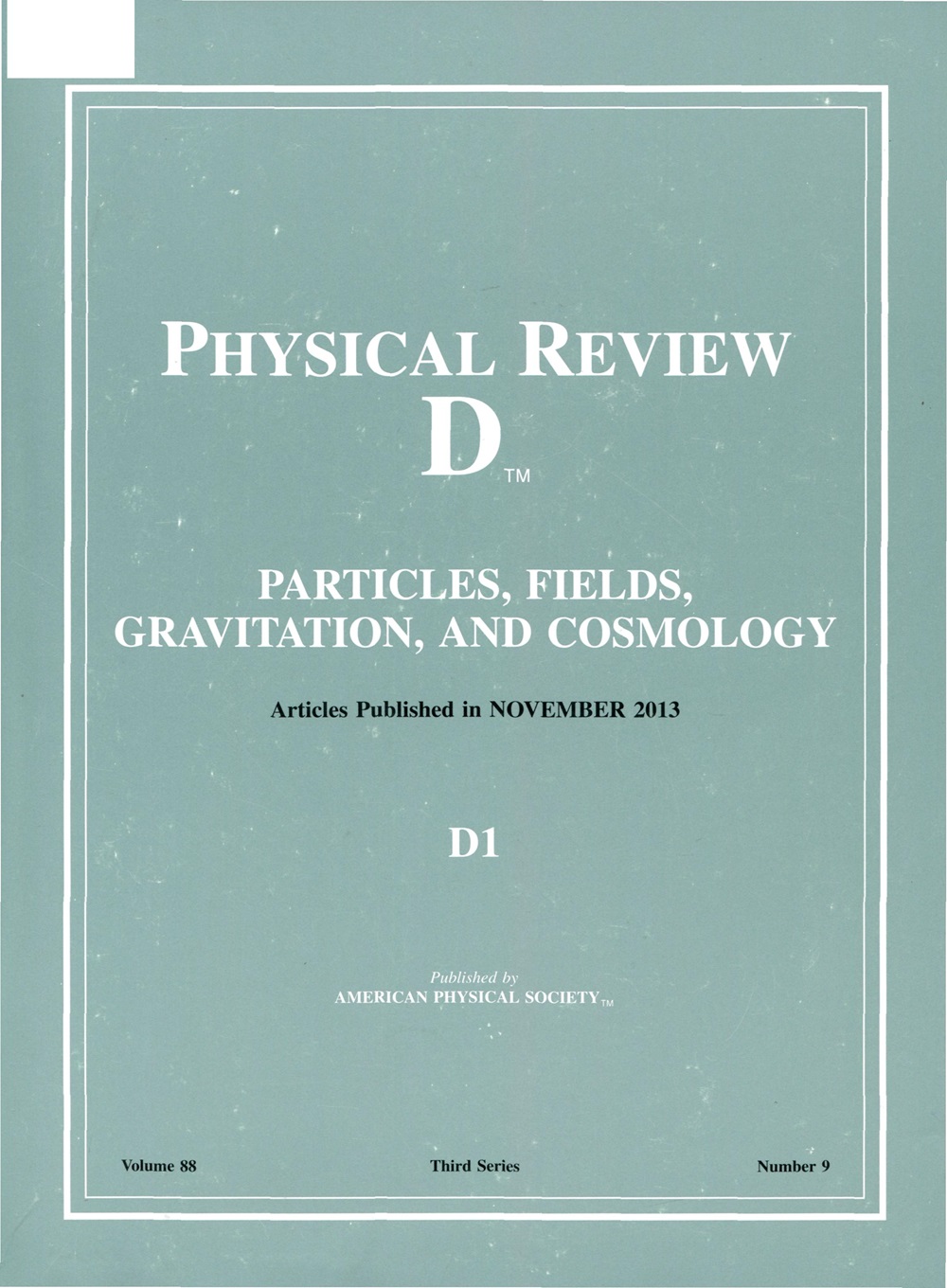Optical effects in an electric dipole spin polarized relativistic quantum plasma
IF 5
2区 物理与天体物理
Q1 Physics and Astronomy
引用次数: 0
Abstract
The covariant, spin-dependent response tensor for an electric dipole-moment-polarized electron gas (statistical distribution of electrons and positrons) is calculated using the formalism of quantum plasmadynamics. A simultaneous eigenfunction of both the Dirac Hamiltonian and the electric moment spin operator is constructed. Expressions for the electric moment states and the corresponding vertex functions are derived. It is shown that when the distribution of momenta is isotropic, the spin-dependent response of an electric-moment-dependent quantum plasma is identically zero. The response is nonzero in the presence of a streaming motion perpendicular to the axis if the electron and positron distributions are different. The response has the same form as for a plasma with a nonzero, cross field current when ⟨pi⟩≠0. This quantum relativistic correction is used to identify the dispersion equation for an electric moment spin-polarized plasma with a streaming cold plasma background. In particular, the natural modes of an electric-moment-dependent quantum plasma exhibit elliptical polarization. This is in contrast to a magnetic-moment-dependent electron gas, which is gyrotropic, or a helicity-dependent electron gas, which is optically active. The different responses, due to quantum plasmas being spin-polarized by different relativistically acceptable spin operators, does not appear in other approaches to quantum plasma theory.电偶极子自旋极化相对论量子等离子体中的光学效应
利用量子等离子体动力学的形式计算了电偶极矩极化电子气体(电子和正电子的统计分布)的协变、自旋相关响应张量。构造了狄拉克哈密顿算子和电矩自旋算子的同时本征函数。推导了电矩态的表达式和相应的顶点函数。结果表明,当动量分布为各向同性时,电矩相关量子等离子体的自旋相关响应等于零。如果电子和正电子分布不同,在垂直于轴的流运动存在时,响应是非零的。当⟨pi⟩≠0时,响应具有与非零的等离子体相同的形式。该量子相对论修正用于确定具有流冷等离子体背景的电矩自旋极化等离子体的色散方程。特别是,依赖电矩的量子等离子体的自然模式表现为椭圆极化。这与依赖磁矩的电子气体相反,它是陀螺性的,或者依赖螺旋的电子气体,它是旋光性的。不同的响应,由于量子等离子体是由不同的相对论可接受的自旋算子的自旋极化,没有出现在量子等离子体理论的其他方法。2025年由美国物理学会出版
本文章由计算机程序翻译,如有差异,请以英文原文为准。
求助全文
约1分钟内获得全文
求助全文
来源期刊

Physical Review D
物理-天文与天体物理
CiteScore
9.20
自引率
36.00%
发文量
0
审稿时长
2 months
期刊介绍:
Physical Review D (PRD) is a leading journal in elementary particle physics, field theory, gravitation, and cosmology and is one of the top-cited journals in high-energy physics.
PRD covers experimental and theoretical results in all aspects of particle physics, field theory, gravitation and cosmology, including:
Particle physics experiments,
Electroweak interactions,
Strong interactions,
Lattice field theories, lattice QCD,
Beyond the standard model physics,
Phenomenological aspects of field theory, general methods,
Gravity, cosmology, cosmic rays,
Astrophysics and astroparticle physics,
General relativity,
Formal aspects of field theory, field theory in curved space,
String theory, quantum gravity, gauge/gravity duality.
 求助内容:
求助内容: 应助结果提醒方式:
应助结果提醒方式:


